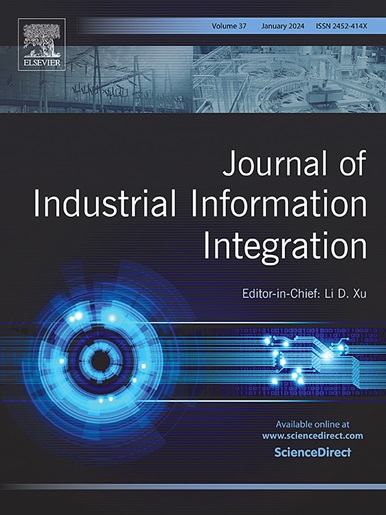中心区块链:揭示实体供应链的透明度范式
IF 10.4
1区 计算机科学
Q1 COMPUTER SCIENCE, INTERDISCIPLINARY APPLICATIONS
引用次数: 0
摘要
这项工作通过引入“中心区块链”的概念,提出了供应链管理(SCM)的突破性创新。虽然区块链技术的采用已经为供应链带来了透明度,但它的全面实施可能会给企业带来财务负担。为了应对这一挑战,本研究提出了一种具有成本效益的解决方案,其中建立集线器以促进数据的存储、交换、分析、分离、发送和分发。这些中心还确保所有供应链成员都能平等地访问数据。通过在这些中心上实现区块链,该方法显著提高了供应链的透明度,并优化了其运营,而无需对现有数据结构进行任何修改。为此,我们开发了一个优化模型,该模型同时设计了实体供应链及其区块链对应品。该模型旨在最大限度地降低总成本,同时最大限度地提高采用区块链技术带来的透明度。为了有效且最优地求解这一多目标模型,应用模糊目标规划(FGP)方法。结果证明了中心区块链在供应链规划和缓解数据流量拥堵方面的成本效益。然而,研究结果表明,枢纽区块链战略面临收益递减规律,即增加枢纽区块链的数量可能会减少相应的优势。本文章由计算机程序翻译,如有差异,请以英文原文为准。
Hub-blockchain: Unveiling the transparency paradigm in physical supply chains
This work presents a groundbreaking innovation in Supply Chain Management (SCM) by introducing the concept of "Hub-Blockchain". While the adoption of blockchain technology already brings transparency to supply chains, its full implementation can be financially burdensome for companies. In order to address this challenge, this research proposes a cost-effective solution where hubs are established to facilitate the storage, exchange, analysis, separation, sending, and distribution of data. These hubs also ensure equal access to data for all supply chain members. By implementing blockchain on these hubs, the approach significantly enhances supply chain transparency and optimizes its operations without necessitating any modifications to the existing data structure. To do so, we develop an optimization model that simultaneously designs the physical supply chain and its blockchain counterpart. The model aims to minimize total costs while maximizing transparency resulting from the adoption of blockchain technology. To effectively and optimally solve this multi-objective model, Fuzzy Goal Programming (FGP) approach is applied. Results demonstrate the cost-effectiveness of hub-blockchains in supply chain planning and in mitigating data traffic congestion. However, the results reveal that the hub-blockchain strategy faces a law of diminishing returns, that is, increasing the number of hub-blockchains may diminish the corresponding advantage.
求助全文
通过发布文献求助,成功后即可免费获取论文全文。
去求助
来源期刊

Journal of Industrial Information Integration
Decision Sciences-Information Systems and Management
CiteScore
22.30
自引率
13.40%
发文量
100
期刊介绍:
The Journal of Industrial Information Integration focuses on the industry's transition towards industrial integration and informatization, covering not only hardware and software but also information integration. It serves as a platform for promoting advances in industrial information integration, addressing challenges, issues, and solutions in an interdisciplinary forum for researchers, practitioners, and policy makers.
The Journal of Industrial Information Integration welcomes papers on foundational, technical, and practical aspects of industrial information integration, emphasizing the complex and cross-disciplinary topics that arise in industrial integration. Techniques from mathematical science, computer science, computer engineering, electrical and electronic engineering, manufacturing engineering, and engineering management are crucial in this context.
 求助内容:
求助内容: 应助结果提醒方式:
应助结果提醒方式:


